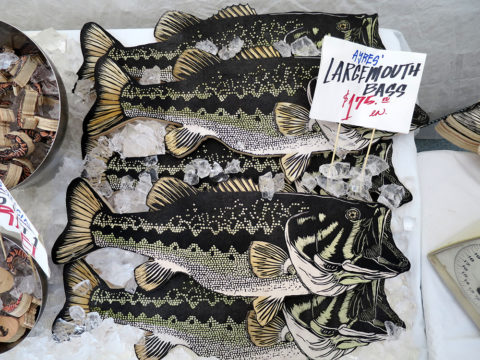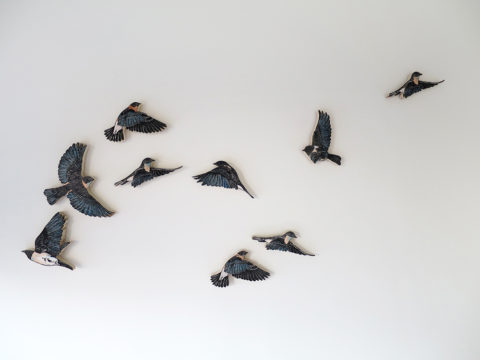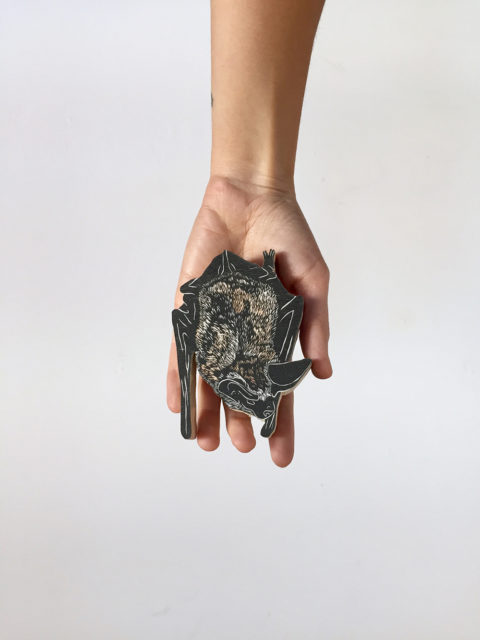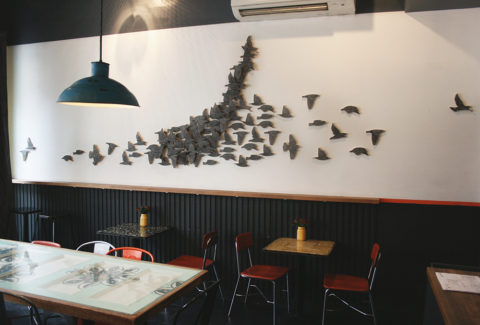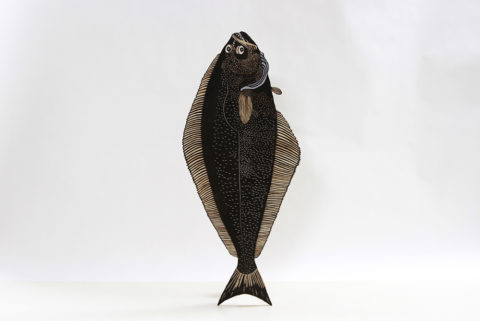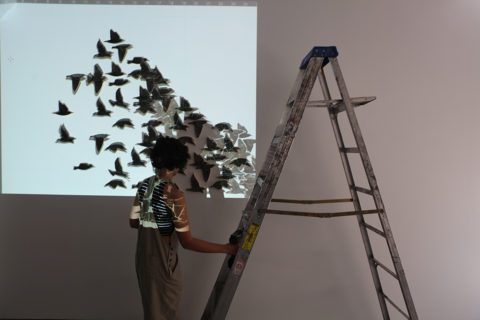This week’s printmaker is Brooklyn-based artist Nic Annette Miller. Nic is a multidisciplinary artist who has a particular interest in woodblock printmaking, installation, concept research, and art direction of photography and video. While trained in traditional printmaking techniques, Nic has taken her work beyond traditional, two-dimensional prints, creating sculptural objects, short videos, and large installations. After reading her interview, take a minute to watch her short stop-motion animation video, All I Can Do Is What I Do, to see for yourself. You may end up watching it over and over again.
JH: When kids say that they want to be artists, most grownups assume that they want to become painters or illustrators (or, occasionally, sculptors) – but never printmakers. How did you find your way into this medium? What other media do you work in?
NAM: I was initially enrolled in the photography program at Utah State University in Logan, Utah. I attended a lecture by visiting artist, Sean Caulfield and signed up for his workshop. Printmaking was a very foreign world and Sean’s work really drew me in enough to take the basics class the next semester, ultimately changing my major. My instructor Kathy Puzey is a notorious woodcut printmaker who shared her love of printing from grain. It was my thesis show where I had to find a way to display my work and had a hard time putting a frame to animal heads. This is when I mounted them to ¾” plywood and cut them out with a jigsaw. From there my prints turned into objects and over the years I started creating environments from them. The large-scale installations are what really motivate me to make.
How would you describe your work?
My prints become little objects that I call sculptural woodcut prints. The process involves carving the image in birch plywood and then printing from it onto Thai Mulberry paper with an etching press. From there I mount the paper to plywood, cut it out with a scroll saw, sand, keyhole, dust and hang. Maybe add some watercolor or pigment dust.
What’s the first thing you ever remember making?
A feature length film* using computer paper, the kind that had to be perforated apart, wrapped like scroll paper with two paper towel rolls and displayed in a cereal box.
*Things feel like forever when you’re young.
You are both a fine artist and a commercial one. How do both practices influence each other?
One cannot exist without the other. Only recently did I realize that I am more of an installation artist than a printmaker. I am not trying to create a single piece or print. It’s a collection for an environment and for a thought I am processing. After a show, selling a sculptural woodcut print in my online shop supports my job as an artist. A “kickfinisher,” if you will (Kickstarter joke). Having a direct relationship with customers means a lot to me as I learn a backstory to what the work means to them or how it makes them feel. It’s a whole beautiful give-and-receive.
What are you currently working on, and why?
I’m at the tail(feather) end of The Murmurmotion Project. Last year I couldn’t find a venue to do an install, so I made space on the internet with a stop-motion video of the European Starling’s formative flight. I connected their smoke-like abstract movement to how my depression feels. Studying murmuration videos showed me the beauty in what feels strange and seemingly chaotic if you just watch it. Little did I know that this project would result into four installs, publishing a personal essay and bonding with numerous friends and strangers about the very human desperate feeling. I say I am at the end of the project because I only have a few sets left, which means the funding is coming to a close. However, my depression will continue to be worked on through this new understanding of watching it; admiring it.
Do you have a dream project (or two)?
A very enthusiastic YES. Many. I literally don’t know where to begin to tell you or with them in general.
What’s next?
Hopefully one of those long overdue dream projects involving hands and the imagination. Otherwise known as sign language. My mother is deaf and ASL is actually my first language. This project is a way to communicate and show the words I hear and see.
What advice would you give to someone who is just starting out?
You’re going to learn a lot from each project, whether it’s technique or meaning. So what the hell are you waiting for?
How can people find you?
Shop: nicannettemiller.bigcartel.com
Instagram: @nicamiller
Twitter: @nicamiller
Facebook: www.facebook.com/NicAnnetteMillerStudio

